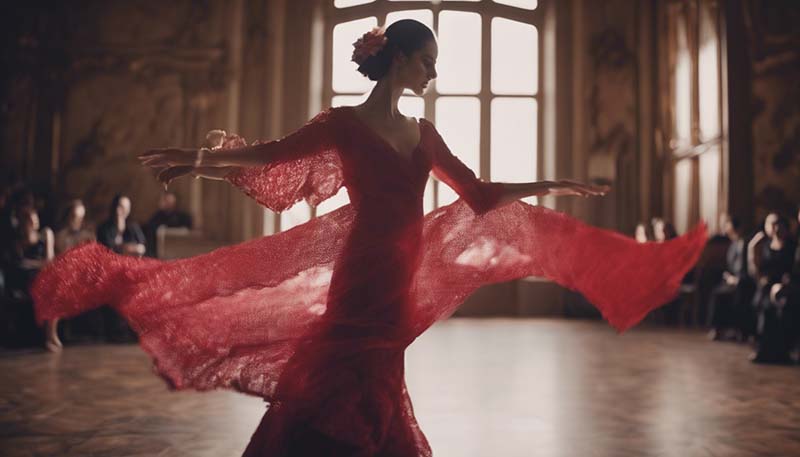The Art of Flamenco: A Passionate Expression
The Art of Flamenco: A Passionate Expression
Flamenco is a vibrant and expressive art form that originated in the Andalusian region of Spain. It is a fusion of music, dance, and emotion that has captivated audiences around the world for centuries. This article delves into the history, components, and cultural significance of flamenco, exploring its enduring appeal and the passionate expression it embodies.
Introduction to Flamenco
Flamenco is more than just a dance; it is a way of life for those who are deeply connected to it. It is a reflection of the soul, a language that communicates the deepest emotions and stories. The art form has evolved over time, influenced by various cultures and traditions, including Romani, Jewish, and Moorish influences.
History of Flamenco
The origins of flamenco are a subject of debate among historians and scholars. However, it is widely believed that flamenco emerged in the 18th century, with its roots in the Andalusian region of Spain. The Gypsies, or Romani people, are often credited with bringing the initial elements of flamenco to Spain, blending their music and dance with the local traditions.
Early Development
During the early days, flamenco was primarily performed in small, intimate settings, such as family gatherings and social events. It was a way for people to express their emotions, tell stories, and connect with their cultural heritage. Over time, flamenco began to gain popularity and spread throughout Spain and eventually to other parts of the world.
Advertisement
Modern Flamenco
In the 20th century, flamenco experienced a significant transformation. It moved from being a primarily rural and folkloric art form to a more urban and professional one. The emergence of tablaos, or flamenco venues, in cities like Seville and Madrid allowed for the growth and commercialization of the art form. Today, flamenco is recognized as a UNESCO Intangible Cultural Heritage of Humanity, reflecting its importance and influence on global culture.
Components of Flamenco
Flamenco is a multi-faceted art form that encompasses various elements, including:
Cante (Singing)
The singing in flamenco is as powerful as the dance itself. There are numerous styles of cante, each with its own unique characteristics and emotional qualities. Some of the most well-known styles include cante jondo, which is characterized by its deep, emotional intensity, and seguiriya, a style that often deals with themes of love and loss.
Baile (Dance)
The dance in flamenco is a visual representation of the emotions conveyed through the music. It is marked by its strong, sharp movements, intricate footwork, and expressive hand gestures. Flamenco dancers use their entire bodies to communicate the story and emotions of the music, making it a highly physical and demanding art form.
Toque (Guitar)
The guitar is a central instrument in flamenco, providing the rhythm and melody that drive the performance. Flamenco guitarists use a unique technique that involves plucking the strings with a combination of the fingers and the thumb, creating a distinct sound that is both percussive and melodic.
Palmas (Clapping)
Clapping, or palmas, is an essential part of flamenco, serving as a rhythmic accompaniment to the music and dance. It is a complex and nuanced form of expression, with different patterns and accents that can add depth and complexity to the performance.
Paso (Stepping)
The footwork in flamenco is a critical element of the dance, with intricate patterns and rhythms that add to the overall performance. The sound of the dancer's heels striking the floor, known as taconeo, is a distinctive feature of flamenco and contributes to the powerful, percussive quality of the art form.
Cultural Significance
Flamenco is deeply intertwined with the culture and history of Spain, particularly the Andalusian region. It is a means of preserving and celebrating the diverse cultural influences that have shaped the region over the centuries. The art form has also played a significant role in promoting Spanish culture and identity on the global stage.

Social and Emotional Expression
Flamenco allows individuals to express their emotions and experiences in a powerful and authentic way. The art form has historically been a means for marginalized communities, such as the Romani people, to communicate their stories and struggles. It has also been a source of empowerment and self-expression for women, who have often been at the forefront of flamenco as performers and creators.
Community and Tradition
Flamenco is a deeply communal and traditional art form. It is often passed down through generations and shared within families and communities. The process of learning and performing flamenco is a way of connecting with one's cultural heritage and maintaining the traditions and values that have been passed down through the years.
Conclusion
Flamenco is a unique and powerful art form that has captivated audiences for centuries. Its rich history, diverse components, and cultural significance make it a truly remarkable expression of human emotion and creativity. As flamenco continues to evolve and adapt to the changing world, it remains a testament to the enduring power of artistic expression and the deep connection between music, dance, and the human spirit.
References
For further reading and exploration of the art of flamenco, consider the following resources:
- Books on the history and techniques of flamenco
- Documentaries and films that showcase the art form
- Live performances at tablaos and cultural festivals
- Online courses and workshops for learning flamenco dance and music